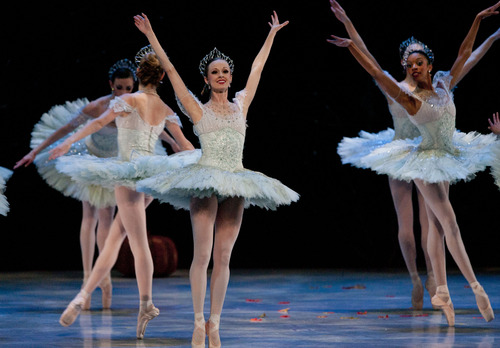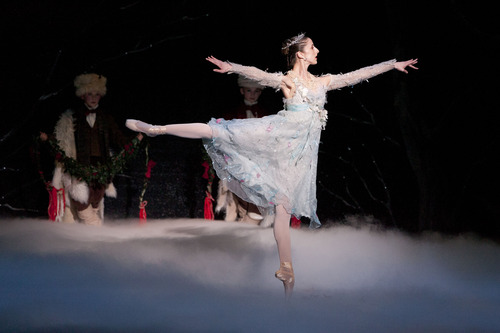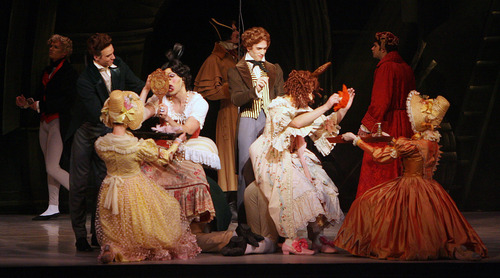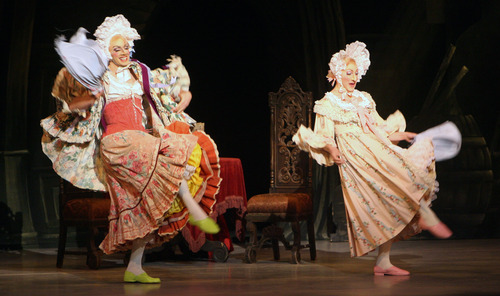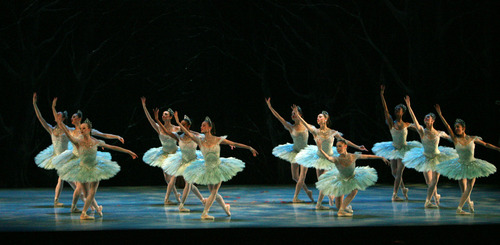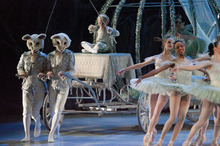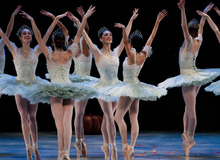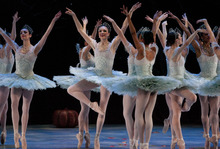This is an archived article that was published on sltrib.com in 2013, and information in the article may be outdated. It is provided only for personal research purposes and may not be reprinted.
Arolyn Williams will steal your heart as Cinderella in the biggest little ballet ever produced by Ballet West.
Although the cast exceeds 30 dancers on stage at times, it's the details that make this ballet so rich warmed by well-wrought characters. Sir Frederick Ashton's very English blend of lyrical classicism and modernity give us a "Cinderella" that's theatrical, refined and inventive.
Ashton choreographed the ballet to Prokofiev's Cinderella Ballet, Op. 87. The composer began the work as the Germans invaded Russia, and finished it in the mid-1940s under the rigid artistic restrictions of the Soviet Communist party.
In the United States, we consider "Cinderella" a simple rags-to-riches story. But in Prokofiev's composition, the Ugly Stepsisters personify the ostentatious ruling class, and Cinderella is a hero who saves the Prince from an unfilled life as an Imperialist.
Ashton's choreography embraces the depth and despair Prokofiev felt as he toiled in exile under constructs of political limitations. But the choreography Ashton produced to the sometimes mordant score broke from strict classical tradition and is filled with individual experimentation.
Each of the three acts in the ballet builds slowly, and for present-day American audiences, the drama is more like an episode of "Downton Abbey" than "CSI Miami." The audience gets to know the Ugly Stepsisters as two very specific personalities, whose sibling rivalry is obsessive and crueler between them than toward Cinderella. Dancers Chris Ruud and Easton Smith don't over reach as the Uglies, but rather bring a touch of the surreal to the already Dali-esque quality of their characters.
The elegant ballet builds tension through the sense of fleeting time that defines its well-known plot. As the clock nears midnight, the Fairies of the Four Seasons and the Twelve Fairies of the Hours mark the precious moments closing in on Cinderella. Dancer Jacqueline Straughan as The Fairy Autumn articulated the movement so beautifully through her legs and feet, her dancing an example of what sets Ashton's choreography apart from less-eloquent techniques.
The Prince's Friends, particularly dancers Christopher Anderson and Adrian Fry, landed tours into pirouettes with clarity and ease.
The children in the production blended so well with the company that they only stood out due to their adorable faces.
Dancer Thomas Mattingly was his usual reliable and charming self as the Prince, steady and selfless, as always, in his partnering and sustained quadruple pirouettes.
Guest conductor Adam Flatt did an excellent job leading the Utah Chamber Orchestra in Prokofiev's difficult and soaring score.
The Ashton choreography tilts dancers off center while they remain on pointe. It requires dancers to change directions while looking the opposite way, and creates intricate hypnotic patterns.
But mostly, Ashton's choreography doesn't tell a story. Rather, it portrays characters and develops narrative that unfolds theatricality, while inviting the audience to experience the story for the first time — even one as familiar as Cinderella.
Ballet West's 'Cinderella'
A beautiful and complex look at the age-old fairytale of Cinderella.
Where • Capitol Theatre, 50 W. 200 South, Salt Lake City
When • Reviewed Thursday, Feb. 14; repeats Saturday and Sunday and Feb. 20-23 at 7:30; 2 p.m. matinee Saturday, Feb. 23.
Running time • Three hours, with two intermissions.
Tickets • $19-$75, at 801-355-2787, arttix.org or Capitol Theatre box office.




